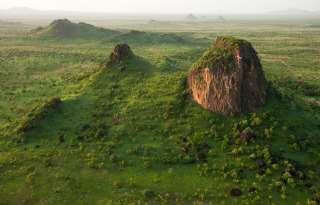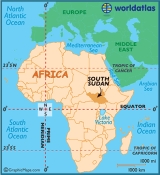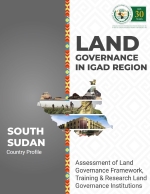|
|
|
Industry and infrastructure in landlocked South Sudan are severely underdeveloped and poverty is widespread, following several decades of civil war with Sudan. Continued fighting within the new nation is disrupting what remains of the economy. The vast majority of the population is dependent on subsistence agriculture and humanitarian assistance. Property rights are insecure and price signals are weak, because markets are not well-organized.
Profiles
South Sudan is still haunted by the laws formulated before its secession such as the Unregistered Land Law of 1970. In essence, that law provided that all land that is not registered shall be owned by the state/government. This law went against the interest of the South as all the rural land is not registered and so it would, by that law, be taken over by the state. Under the Transitional Constitution of the Republic of South Sudan 2011, the people of South Sudan own all the country's land and its usage is regulated by the government in accordance with the Constitution and Law. The applicable law in this case is the Land Act of 2009.
Read More on folder Profiles...
Gender and Land
When violence erupted in Juba on 15 December 2013, tens of thousands of people fled to seek refuge in United Nations (UN) bases and entire neighborhoods were left deserted. In the weeks and months that followed, insecurity lingered and the abandoned neighborhoods became highly militarized. Reports surfaced of military actors and people displaced from fighting elsewhere in South Sudan occupying the homes of displaced persons. After the situation in Juba stabilized, the government formed a committee to address the issue and began lobbying for internally displaced persons (IDPs) to leave the UN bases. While a few people have taken the opportunity to visit or return to their former homes, the vast majority are not willing to leave the relative safety of the UN bases. Meanwhile, the status of the property they left remains a major source of concern.
Read More on folder Gender...
Land and Conflict
2011 has been a momentous year for South Sudan. It is the culmination of a long struggle for the freedom of the people of South Sudan following decades of conflict and marginalisation. Since the signing of the Comprehensive Peace Agreement in 2005, the Government of Southern Sudan has made a number of significant achievements, not least the maintenance of relative peace and security and the establishment of the essential institutions of government at the central, state and local government level. The conduct of a successful, transparent referendum on independence in January 2011 left no doubt as to our future as an independent nation, which was confirmed and celebrated on 9th July. However, the attainment of independence brings with it significant challenges and we must plan now to ensure a prosperous future.
Read More on folder Conflict...
Land and Investment
The second session of the Sudan/South Sudan seminar series under the theme ‘Agricultural Potential in the Sudans: Past Experience and Future Outlook’ took place on the 7 December 2015. The session which is one of the four Seminar Series of 2015/2016 academic year is jointly organised by the Centre of African Studies at the School of Oriental and African Studies, University of London and the Society for the Study of the Sudans, UK. The series is aimed at bringing together academics and practitioners concerned with Sudan and South Sudan to deliberate on a range of legal, economic, political and cultural issues whilst seeking insights into current and future developments in the two countries
Read More on folder Investment...
Land and Rural Development
In alleviating poverty in Lakes State in general and in the two counties (Yirol East and Wulu) in particular, there is a need to assess the property rights and its effects, identify the livelihoods and production assets of people solely involved in the cultivation of crops and agropastoralists, assess the role of the land tenure system and how it contributes to land conflicts as well as conduct gender analysis of the impact of land tenure on the vulnerability of women and children in Yirol East and Wulu of Lakes State, South Sudan. Both quantitative and qualitative research methodology were utilized in this study.
Read More on folder Rural Development...
Land and Urbanization
The signing of Sudan’s Comprehensive Peace Agreement has brought with it the prospects for Southern Sudanese leaders to provide for a just and durable peace for their citizens. As the Government of Southern Sudan (GoSS) proceeds to extend civil authority throughout the New Sudan, the GoSS has made strategic town planning a priority project. In order to assist the GoSS to respond in an effective and timely manner to pressing population return and reintegration issues, the GoSS and USAID through its implementing partner, Creative Associates International, Inc., jointly collaborated on a detailed municipal assessment of Juba to examine opportunities, constraints, and challenges in addressing rapid growth and change in Juba
Read More on folder Urbanization...
Land Laws and Policies
Grateful to the Almighty God for giving the people of South Sudan the wisdom and courage to determine their destiny and future through a free, transparent, and peaceful referendum in accordance with the provisions of the Comprehensive Peace Agreement, 2005;
Read More on folder Legislation and Policies...


